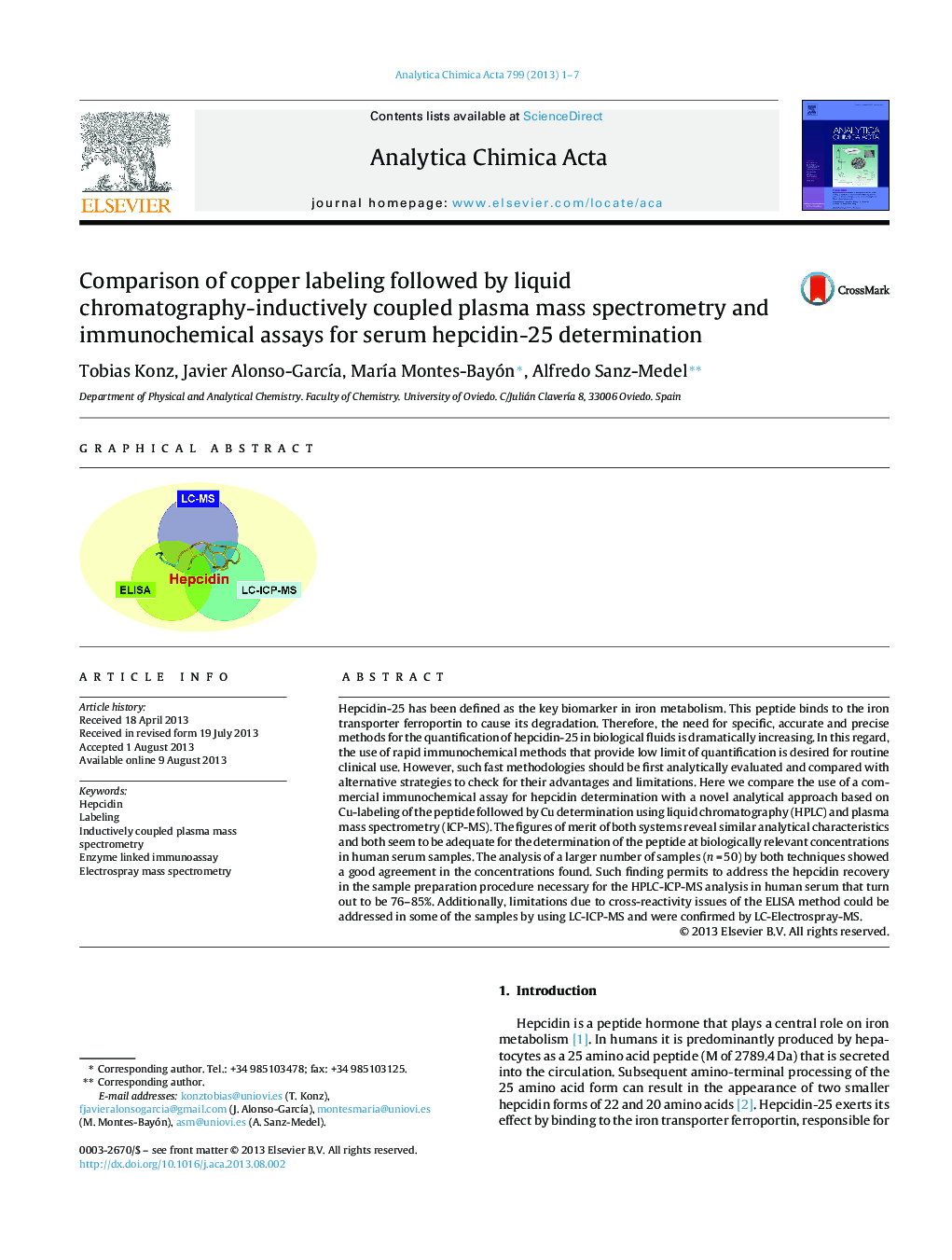| Article ID | Journal | Published Year | Pages | File Type |
|---|---|---|---|---|
| 1165504 | Analytica Chimica Acta | 2013 | 7 Pages |
Hepcidin-25 has been defined as the key biomarker in iron metabolism. This peptide binds to the iron transporter ferroportin to cause its degradation. Therefore, the need for specific, accurate and precise methods for the quantification of hepcidin-25 in biological fluids is dramatically increasing. In this regard, the use of rapid immunochemical methods that provide low limit of quantification is desired for routine clinical use. However, such fast methodologies should be first analytically evaluated and compared with alternative strategies to check for their advantages and limitations. Here we compare the use of a commercial immunochemical assay for hepcidin determination with a novel analytical approach based on Cu-labeling of the peptide followed by Cu determination using liquid chromatography (HPLC) and plasma mass spectrometry (ICP-MS). The figures of merit of both systems reveal similar analytical characteristics and both seem to be adequate for the determination of the peptide at biologically relevant concentrations in human serum samples. The analysis of a larger number of samples (n = 50) by both techniques showed a good agreement in the concentrations found. Such finding permits to address the hepcidin recovery in the sample preparation procedure necessary for the HPLC-ICP-MS analysis in human serum that turn out to be 76–85%. Additionally, limitations due to cross-reactivity issues of the ELISA method could be addressed in some of the samples by using LC-ICP-MS and were confirmed by LC-Electrospray-MS.
Graphical abstractFigure optionsDownload full-size imageDownload as PowerPoint slide
